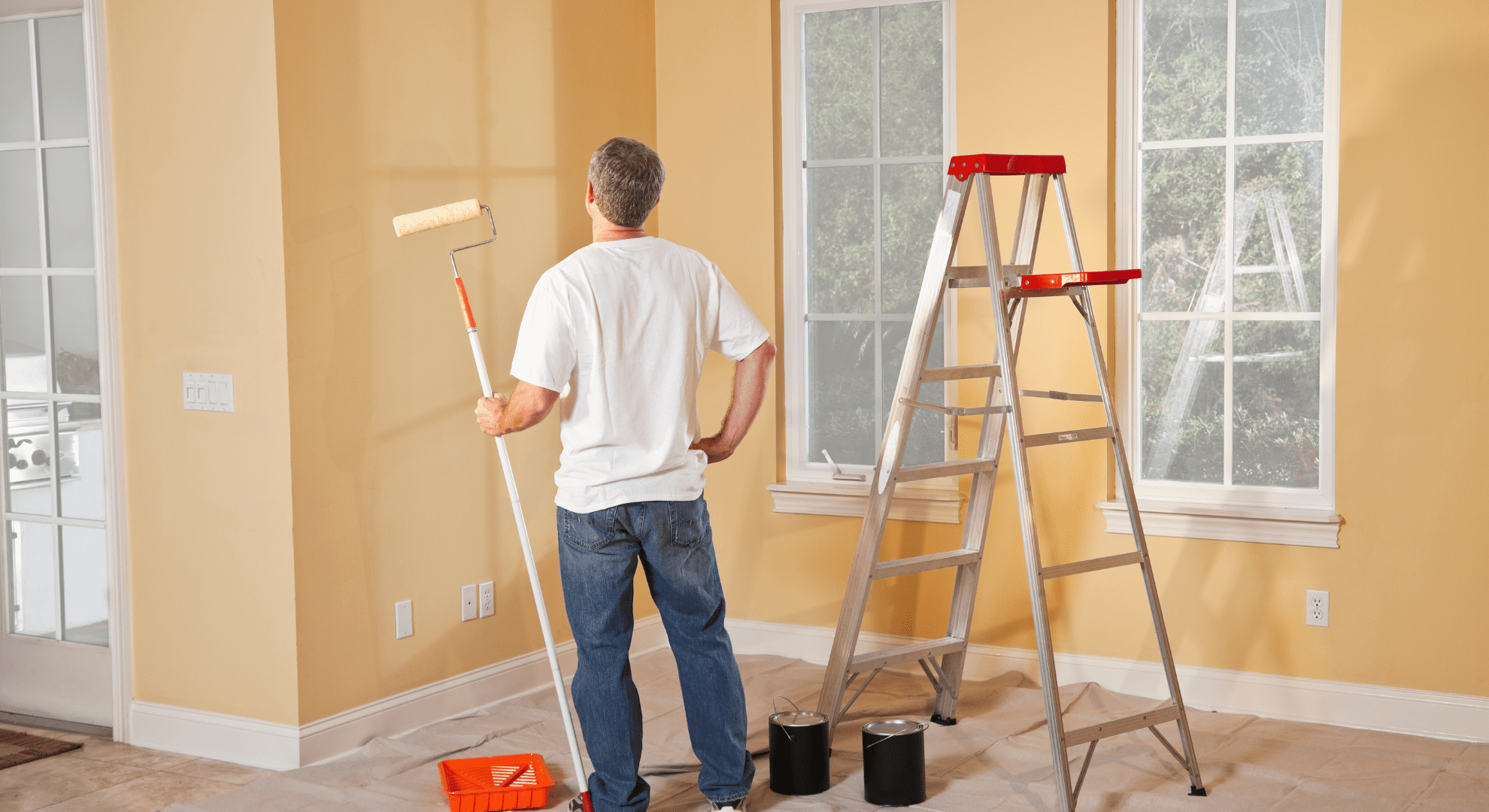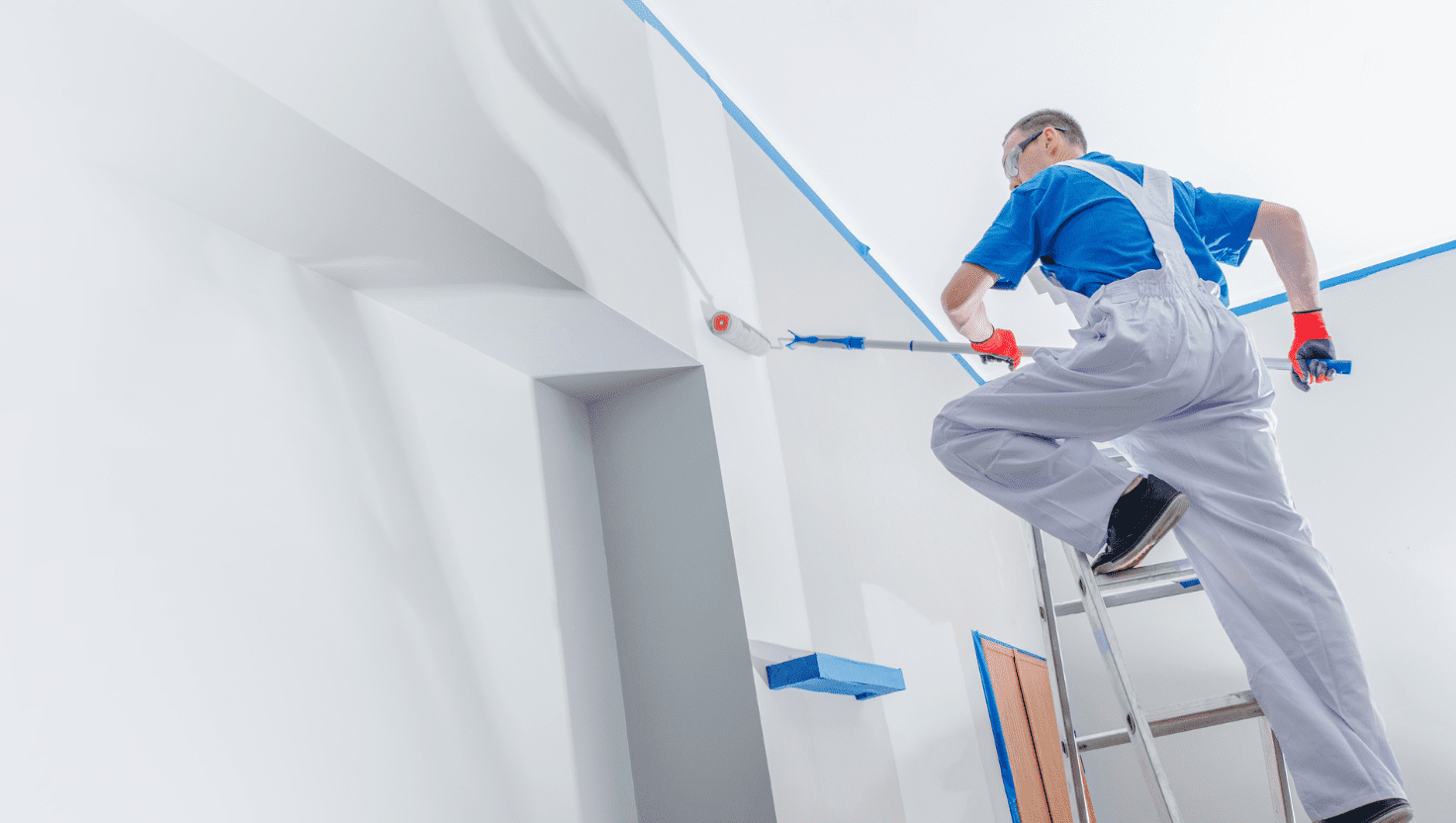A freshly painted room can make you feel refreshed, rejuvenated, energised and in our experience it can also evoke a sense of calm, peace and cleanliness.
As Perth painting experts, here at Contrast Painting we believe it’s fair to say a new coat of paint can change the entire atmosphere of a room and make it feel brand new. Additionally, it can increase feelings of pride and ownership in one’s space.
FREQUENCY OF REPAINTING YOUR HOME INTERIOR
The frequency of repainting your home interior depends on several factors, including:
- 1. Wear and tear: Areas that receive heavy use, such as kitchens, bathrooms and hallways may need to be repainted more frequently than other areas due to the wear and tear they receive.
- 2. Exposure to light: Areas that receive a lot of natural light may need to be repainted more frequently due to fading from UV light exposure.
- 3. Quality of the paint: The quality of the paint can also affect the frequency of repainting. High-quality paint will typically last longer than lower-quality paint.
- 4. Personal preferences: The frequency of repainting may also depend on personal preferences and the desired look of the home. Some people may prefer to repaint every few years to keep their home looking fresh, while others may wait longer between repainting.
On average, an interior painter would recommend that you repaint the interior of your home every 5 to 7 years. However, the actual frequency of repainting will depend on the specific factors mentioned above, and it may be necessary to repaint more or less frequently in some cases.
KEEPING IT FRESH
It is important to make sure your home interior is well-maintained for several reasons:
- 1. Aesthetics: A well-maintained interior adds to the overall beauty of your home and creates a welcoming and comfortable environment.
- 2. Value: Keeping your home in good condition can help increase its resale value and attract potential buyers if you decide to sell in the future.
- 3. Health and safety: Neglecting maintenance, such as fixing leaks or repainting, can lead to health and safety issues such as mould growth, peeling lead-based paint, or fire hazards.
- 4. Longevity: Regular maintenance can extend the life of your home’s interior and prevent costly repairs down the road.
- 5. Peace of mind: Living in a well-maintained home can give you peace of mind and reduce stress by creating a comfortable and safe environment for you and your family.
Maintaining your home’s interior is an important investment in your property, quality of life, and overall well-being and as experts in Perth residential painting we would point out that there are several signs that indicate your home’s interior needs a repaint, including:
- 1. Faded or dull paint colour: Over time, paint can lose its vibrancy and start to look dull or fade.
- 2. Chipped or peeling paint: If the paint on your walls or ceilings is chipping or peeling, it’s time for a new coat of paint.
- 3. Stains or marks on the walls: If your walls have stubborn stains or marks that won’t come off with regular cleaning, it’s a good idea to repaint to cover them up.
- 4. Changing interior design: If you’re looking to change the look of your home, a fresh coat of paint is a simple and effective way to do so.
- 5. Wear and tear: High-traffic areas like hallways and staircases tend to show signs of wear and tear more quickly. Repainting these areas can help keep your home looking its best.
If you notice any of these signs, it’s a good idea to consider a repaint to refresh and rejuvenate your home’s interior.
CHIPPED OR PEELED PAINT – WHAT TO DO FIRST?
Before repainting walls with chipped and peeled paint, it’s important to take the following preparation steps:
- 1. Clean the surfaces: Clean the walls thoroughly to remove dirt, grease, and other debris. This will help ensure a smooth surface for the new paint to adhere to.
- 2. Repair any damage: Repair any cracks, holes, or damaged areas in the wall surface before painting. Fill any holes with filler, sand the surfaces smooth, and clean any debris.
- 3. Remove loose paint: Scrape off any loose or peeling paint with a putty knife. Be sure to wear protective gear, such as gloves and a dust mask, to prevent inhaling paint particles.
- 4. Sand the surface: Sand the surface of the wall lightly to remove any rough areas and to help the new paint adhere better.
- 5. Clean up dust: Clean up any dust and debris generated during the sanding process. A damp cloth or a vacuum cleaner with a dust brush attachment can be used to remove the dust.
- 6. Prime the surface: Priming the surface before painting will help the new paint adhere better and will also help to hide any surface imperfections.
By following these steps, you can prepare the surfaces with chipped and peeled paint for repainting and ensure a smooth and even application of the new paint.
HOW MANY COATS OF PAINT DO YOU NEED?
The number of coats of paint required when repainting your home depends on several factors, including:
- 1. Surface type: The type of surface being painted will determine the number of coats required. For example, new drywall typically requires two coats of paint, while previously painted surfaces may only require one.
- 2. Paint type: The type of paint being used can also affect the number of coats required. Some high-quality paint products may only require one coat, while others may require multiple coats for full coverage.
- 3. Colour change: If you are changing the colour of your walls, you may need more coats to cover the old colour completely. This is especially true if the old colour is very dark or vibrant, and you are painting with a lighter colour.
- 4. Finish: The desired finish of the paint will also affect the number of coats required. For example, if you want a high-gloss finish, you may need additional coats to achieve the desired result.
Typically, two coats of paint are recommended when repainting your home. However, the actual number of coats required may vary, and it’s best to follow the manufacturer’s recommendations for your specific paint product and surface type.
MOULD
Peeling paint can indicate the presence of mould in some cases. Mould can grow on surfaces when there is moisture present, and peeling paint can be a sign that there is a moisture issue behind it. If the paint is peeling due to a moisture problem, mould can start to grow on the wall behind the paint, creating an ideal environment for mould growth.
However, it’s important to note that not all peeling paint is a sign of mould. Peeling paint can also be caused by other factors such as age, poor quality paint, or incorrect painting techniques.
If you suspect that mould may be growing behind your peeling paint, it’s important to have a professional inspect the area. They can determine the cause of the peeling paint and determine if mould is present and if it poses a health risk to you and your family.
AUSTRALIA MOULD PROBLEM – PARTICULARLY IN EASTERN STATES
Mold is a significant problem in Australia, especially in areas with high humidity levels. Australia’s warm and humid climate creates the perfect environment for mould to grow, and many homes and buildings in the country are susceptible to mould growth.
Mold can cause various health problems, such as allergies, respiratory issues, and skin irritation. It’s also important to note that mould can weaken the structure of a building and cause damage to its materials.
To prevent mould growth, it’s important to keep your home or building well-ventilated, address any moisture issues promptly, and maintain a dry environment. Regular cleaning and inspections can also help prevent mould from growing and spreading. If you suspect mould in your home or building, it’s recommended to have a professional assess the situation and determine the best course of action.
Choosing mould-resistant paint can help prevent mould growth, but it is not a guarantee. Mould-resistant paint contains mould inhibitors and fungicides that can help prevent mould from growing on painted surfaces, but it does not guarantee that mould will never grow.
It is also important to note that mould-resistant paint is not designed to prevent mould growth behind walls or in other areas where there is a moisture issue. To prevent mould in these areas, it is important to address the source of the moisture and fix the issue before painting.
TAKE ACTION SOONER RATHER THAN LATER
One of the most obvious signs that a repaint is needed is when the paint starts to chip or peel, which can make the walls look unsightly and also lead to further damage if left unaddressed. Additionally, if the paint on the walls is discoloured or has become dull over time, it may be time for a fresh coat.
Another factor to consider is the age of the paint. Paint that has been on the walls for a long time may begin to crack or flake, which can also indicate that a repaint is necessary. Similarly, if the paint has become brittle or has started to yellow, it’s a sign that it’s time for a new coat.
Other signs that a repaint may be needed include water damage, mould or mildew growth, or other forms of damage to the walls. If there are noticeable stains or spots on the walls that cannot be cleaned or removed, it may be time to repaint. In addition, if the existing paint is of poor quality or was not applied properly in the first place, it may need to be redone to ensure a smooth, even finish.
Overall, a home interior is due for a repaint when the paint is damaged, discoloured, or has simply become worn over time. By keeping an eye out for these signs, homeowners can ensure that their interior paint remains looking fresh and new, while also protecting their walls from further damage.
If you would like to get started on your interior painting contact us today to arrange your quote.







